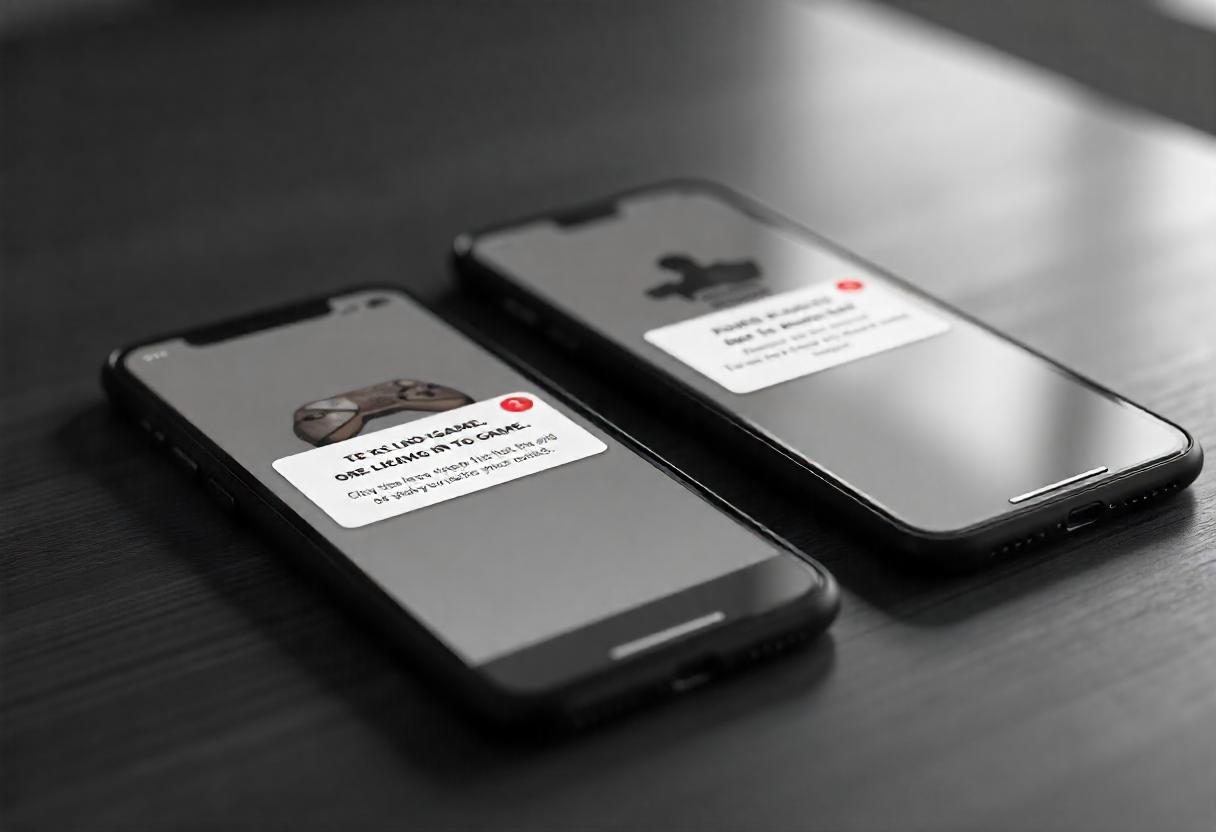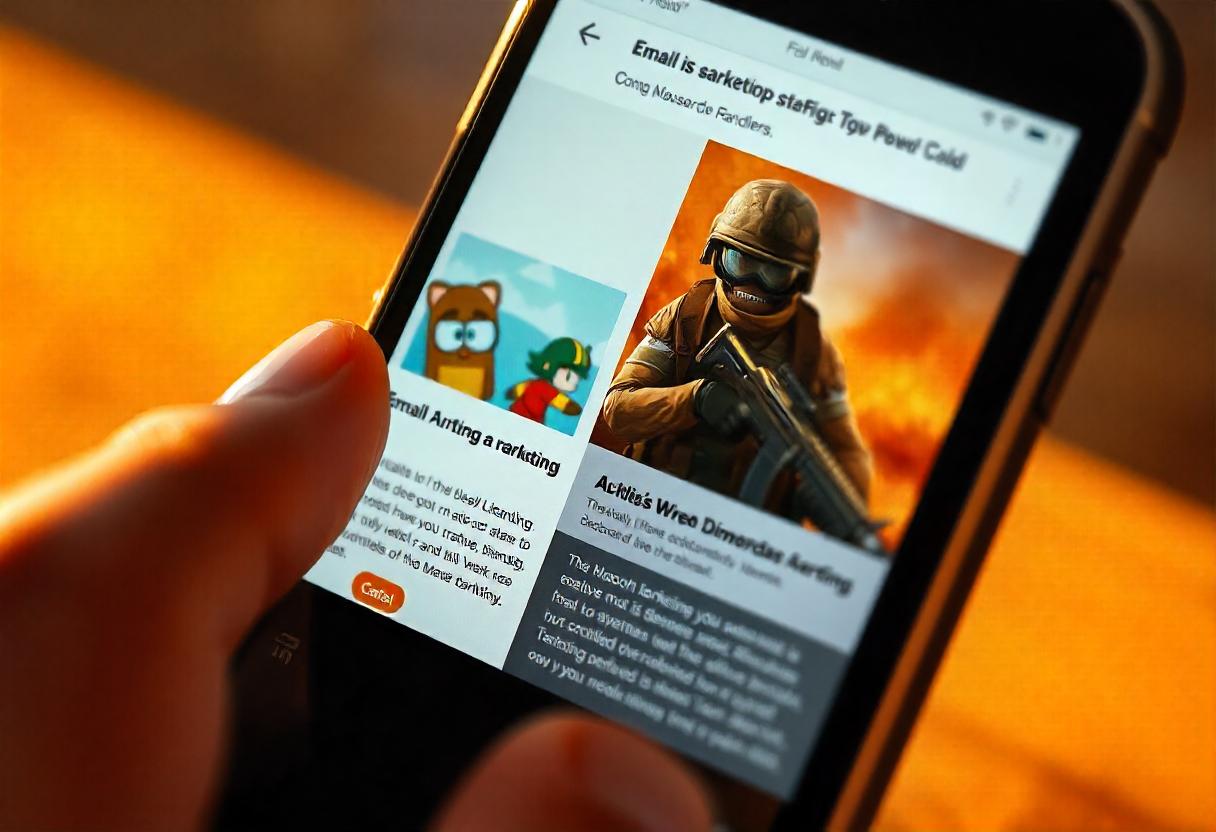Welcome to the exciting world of game marketing! Whether you’re developing a new indie mobile game or working with a AAA title, the challenge is clear: how do you get your game into the hands of players, and most importantly, how do you keep them coming back for more?
Well, look no further than the magic of A/B testing. Yes, we know “testing” sounds a bit nerdy, but trust us–it’s the secret sauce that can take your game marketing campaigns from zero to hero.
As game marketers, we know that getting the right message, image, or ad creative can make or break your campaign. The beauty of A/B testing is that it allows you to optimise and iterate based on data-driven decisions, ensuring that your game reaches the right players and keeps them engaged. Let's dive into how you can implement A/B testing in your game marketing strategies and optimise your way to success!
What is A/B Testing in Game Marketing?
A/B testing, also known as split testing, is like having a cheat code for your marketing campaigns. It involves comparing two versions of a marketing asset—like an ad, email, or landing page—to see which one performs better. By showing different versions to different segments of your audience, you can measure which variant delivers better conversion rates, player engagement, or other key metrics.
In the gaming world, A/B testing is a game-changer (pun intended). Whether you’re optimising ad creatives for a new mobile game or tweaking your App Store Optimisation (ASO) strategy, split testing allows you to make data-driven decisions that improve user acquisition and retention rates.
Imagine this: you're running a mobile game ad on social media, and you’re trying to figure out whether a bright, action-packed image works better than a serene, strategy-focused one. With A/B testing, you can create two versions of the ad, show them to different segments of your audience, and analyse which one gets more clicks, installs, or even longer playtime. It’s as easy as pressing the “Test” button and letting data work it’s magic.

Why A/B Testing is Essential for Game Marketing Strategies
Game marketing isn’t just about flashy trailers and influencer shoutouts—it’s about understanding your audience and delivering content that resonates. Here’s why A/B testing should be part of your game marketing toolkit:
- Boosts Conversion Rates: Testing different versions of your ad creatives can reveal what’s turning potential players into loyal fans. For instance, you might test a bold, action-packed visual against a more serene, story-driven one to see which better appeals to your target audience.
- Enhances User Acquisition: By experimenting with various marketing messages, you can pinpoint which ones drive the most downloads and installs. Testing different headlines or value propositions helps you understand what motivates users to click ‘install.’
- Improves Player Engagement: A/B testing isn’t limited to acquisition; it’s also about retention. You can test in-game promotions, special offers, or even push notification timings to see what keeps players engaged and active.
- Informs Creative Optimisation: Identify which visuals, copy, and formats resonate most with your audience. This could mean testing different color schemes, character highlights, or storytelling approaches in your ads.
- Reduces Marketing Spend: By identifying and investing in what works, you can allocate your budget more efficiently. Instead of spreading your resources thin across multiple campaigns, you can focus on the strategies that deliver the best ROI.
Why Should You Use A/B Testing in Game Marketing?
1. Make Data-Driven Decisions
In the fast-paced world of mobile games, making decisions based on gut feeling alone can be a recipe for disaster. Data-driven decisions are essential for optimising every step of your game marketing process. Instead of guessing what will resonate with your target audience, A/B testing allows you to measure exactly how different creatives, ad formats, or messaging perform.
For example, if you’re running a paid media campaign for your mobile game, you can A/B test different headlines, descriptions, and call-to-actions (CTAs) to see which ones get the highest conversion rates. This approach helps you minimise guesswork and maximise your marketing budget.
2. Optimise Your Ad Creatives
Let’s face it: not all ad creatives are created equal. Some may scream "click me!" while others barely get a second glance. A/B testing is perfect for testing your ad creatives and finding out which visual or message resonates the most with your audience. Whether it’s a trailer for your new game or a flashy playable ad, testing different versions ensures that your ad content is always on point.
In fact, one study found that A/B testing ad creatives can boost click-through rates (CTR) by over 20%. Imagine that kind of boost in your game marketing campaigns—more clicks, more installs, and more engaged players.
3. Improve User Acquisition
User acquisition (UA) is all about getting the right players to download and install your game. The problem is, not all players are created equal. Some might play for five minutes and drop off, while others stick around for hours. By A/B testing your acquisition ads and landing pages, you can figure out which approach results in the highest retention rates and better long-term engagement.
For example, if you’re running a targeted advertising campaign on social media, you can test different audience segments and ad creatives to see which ones generate the most quality installs. This enables you to make smarter decisions on where to spend your marketing dollars.
4. Boost Retention Rates
The first 24 hours after a player installs your game are crucial for ensuring long-term success. But how do you keep players coming back after that initial thrill? A/B testing can help you optimise your onboarding flow, notifications, and in-game events to improve player retention.
For example, you can test two versions of your game’s onboarding process: one with a tutorial and one without. By measuring which version leads to better player engagement, you can decide which method works best for your game’s audience.
5. Refine Your Marketing Campaigns
A/B testing isn’t just about testing individual ads or creatives. It’s also about refining entire marketing campaigns. From influencer marketing to programmatic advertising, A/B testing gives you the insight you need to tweak your overall marketing strategies. Are your influencer partnerships working? Are your social media campaigns reaching the right demographic? Split testing helps you identify what’s driving success and what’s not.
For instance, if you’re working with a gaming influencer, you can A/B test different types of sponsored content—such as gameplay walkthroughs versus challenges—and see which type drives more installs or views.

How to Implement A/B Testing in Your Game Marketing Campaigns
Ready to roll the dice on A/B testing? Here’s a step-by-step guide to help you get started:
1. Define Your Goals
Before you hit “start,” know what you’re aiming for. Are you looking to improve conversion rates, increase user acquisition, or boost retention rates? Clear goals will help you measure success and stay focused.
Example: If you’re running a campaign for a new mobile game, your goal might be to increase installs from a specific targeted advertising channel.
2. Choose What to Test
The beauty of A/B testing is that you can experiment with almost anything. Here are some game marketing elements you might test:
- Ad Creatives: Test different visuals, headlines, and call-to-actions to see which combination attracts more clicks and conversions.
- Playable Ads: Compare interactive ad formats to static ones to determine which drives more downloads.
- App Store Pages (ASO): Experiment with icons, screenshots, and descriptions to find the most compelling presentation.
- Influencer Marketing Campaigns: Test different influencers or content styles to see which resonates more with your target audience.
- Social Media Posts: Analyse engagement rates for various content types—videos, memes, gameplay clips—to identify what your audience prefers.
3. Segment Your Audience
To get accurate results, split your audience into equal, random groups. This ensures that the only difference between the two groups is the version of the marketing asset they see.
Pro Tip: If you’re targeting different regions, adjust your A/B testing strategy to account for cultural preferences and GEO-specific behaviors. For example, color symbolism can vary widely across cultures, affecting how your ad is perceived.
4. Run the Test and Gather Data
Launch your test and let it run long enough to gather meaningful data. Patience is key here—don’t rush to conclusions before the results are statistically significant.
Use analytics tools to track key metrics like conversion rates, user behavior, and player engagement. For mobile games, platforms like Google Play Console and Apple’s App Analytics can provide valuable insights into how users interact with your game.
5. Analyse Results and Iterate
Once your test concludes, analyse the data to see which version performed better. Look beyond just the surface metrics—consider factors like user retention and lifetime value. Use these insights to optimize your marketing campaigns and keep testing new ideas. Remember, A/B testing is an ongoing process—the more you iterate, the better your results.
Best Practices for A/B Testing in Game Marketing
To ensure your A/B testing efforts hit the high score, follow these best practices:
- Test One Variable at a Time: Changing multiple elements at once can muddy the results. Focus on one variable per test to isolate its impact.
- Keep Your Audience Size Balanced: Ensure each test group is of equal size to maintain accuracy and reliability.
- Run Tests Long Enough: Don’t call a winner too soon. Let the test run until you have statistically significant data to support your conclusions.
- Use Control Groups: Always have a control group to compare against your test variants. This helps you understand whether changes are truly effective.
- Document Your Results: Keep a record of your tests and outcomes. This helps you build a knowledge base for future campaigns and avoid repeating past mistakes.
A/B Testing Ideas for Different Game Marketing Channels
1. Mobile Game Marketing
Mobile games live and die by their App Store Optimisation (ASO) and ad campaigns. A/B testing can help optimise both.
- App Icons: Test different icon designs to see which attracts more downloads. A subtle change in color or design can significantly impact user perception.
- Screenshots and Videos: Experiment with various visuals to highlight gameplay features. Showcasing different game modes or character abilities can appeal to diverse player interests.
- Ad Formats: Compare static images, video ads, and playable ads to find what works best. Interactive ads might drive more engagement but could also have higher production costs—test to find the balance.
2. Influencer Marketing
Influencers can make or break a game’s success. Use A/B testing to refine your approach.
- Content Style: Test different types of influencer content (e.g., gameplay reviews vs. comedic skits) to see which resonates more with your audience.
- Influencer Selection: Compare the performance of influencers with different audience demographics. A micro-influencer might drive more authentic engagement, while a macro-influencer could offer broader reach.
3. Social Media Campaigns
Social media is a playground for creativity—and A/B testing.
- Post Timing: Test different posting times to maximise engagement. Morning posts might catch early risers, while evening posts could reach players winding down after work.
- Content Type: Compare memes, trailers, and behind-the-scenes content. Different formats appeal to different segments of your audience, and testing helps identify what works best.
- Ad Targeting: Experiment with different targeted advertising criteria to reach the right audience. Narrowing your focus to specific demographics or interests can improve ad performance and ROI.

The Role of Data-Driven Decisions in Game Marketing
In game marketing, data is your ultimate power-up. Data-driven decisions help you:
- Understand User Behavior: Track how players interact with your ads, app store pages, and in-game promotions. This insight helps tailor future campaigns to better meet user preferences.
- Optimise Marketing Campaigns: Use insights from A/B tests to refine your strategies. Identifying what works (and what doesn’t) allows you to allocate resources more effectively.
- Boost Retention Rates: Identify what keeps players engaged and coming back. Whether it’s a specific in-game reward structure or the timing of push notifications, data helps pinpoint the factors that drive retention.
By embracing A/B testing and making decisions based on hard data, you’ll be able to craft game marketing strategies that not only attract new players but also keep them hooked.
Tips and Tricks for A/B Testing
- Test One Variable at a Time: To accurately measure the impact of each change, focus on testing one variable at a time.
- Use a Large Enough Sample Size: Ensure your tests have enough participants to produce statistically significant results.
- Run Tests for a Sufficient Duration: Run your tests long enough to account for variations in user behavior.
- Analyse and Iterate: Continuously analyse your results and use them to inform future tests and marketing strategies.
Common A/B Testing Mistakes to Avoid
Even the best marketers can fall into A/B testing traps. Here are some pitfalls to watch out for:
- Testing Too Many Variables at Once: Stick to one change per test to ensure clear results. Testing multiple variables simultaneously can make it difficult to identify which change drove the outcome.
- Ending Tests Too Early: Give your tests enough time to gather significant data. Prematurely ending a test can lead to false conclusions and missed opportunities.
- Ignoring Small Wins: Even minor improvements in conversion rates can lead to big gains over time. Don’t overlook the cumulative impact of incremental changes.
- Failing to Re-Test: The gaming landscape is always evolving. Regularly revisit and update your tests to stay current with trends and player preferences.
Up Your Game Marketing with A/B Testing
A/B testing isn’t just a marketing tactic—it’s a mindset. By continuously optimising your ad creatives, socIn a world where mobile games are a dime a dozen and competition for attention is fierce, A/B testing offers game marketers a golden opportunity to stand out. By continuously testing, optimising, and iterating based on data, you’ll not only maximise your marketing ROI but also create campaigns that resonate with your audience.
So, stop guessing what works and start testing what works. With A/B testing in your game marketing toolbox, you’ll be well on your way to success—whether you're optimising paid media, running influencer marketing campaigns, or perfecting your app store optimisation (ASO) strategy. Remember: when in doubt, split it out. Happy testing!



